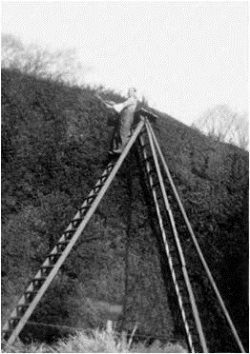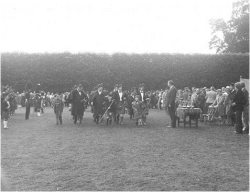Learn the history of the Large Parterre Gardens
Historical maps and drawings of Antrim Castle Gardens show a small parterre, that is a flat plot of elaborate beds for flowers or coloured gravel, located in an enclosed garden compartment on the eastern side of the southern end of the long canal. In all probability the Gardens had other parterres which await discovery with further research, but they remained until recently one of the few missing elements of the original formal garden.
However, a large parterre was laid out in the field to the west of the long canal during the 1990’s so visitors could fully experience what the early garden looked like. This area had a varied history and had been in the late 18th and early 19th century a kitchen garden with a glass house.
It is interesting to note that the creator of the original garden, Sir John Skeffington, 2nd Viscount Massereene, was amongst a small group of landowners, which included Sir Arthur Rawdon at Moira, who were using glass in the late 18th century to raise tender plants, and it has been claimed that Massereene and Lord Granard of Castle Forbes, County Longford, were the first in Ireland to grow pineapples.
The area was grassed over by 1857 when production moved to the Terrace Gardens, and, during the 20th century, it was used for sports and agricultural shows.
The high lime and yew hedges survived and gave the space a distinct 17th century feel making it the ideal location for the reconstruction of a late 17th or early 18th century formal parterre with boxed edged beds and period planting.
The creation of this new parterre was undertaken with funding from the European Regional Development Fund, and the design of the beds was based on a parterre recovered by archaeology at the destroyed formal garden at Castle Coole, County Fermanagh.
A platform was created at the northern end so the pattern of the parterre could be fully appreciated, and this was planted out with groves of pleached hornbeam in a quincunx formation, a feature common to 17th century formal gardens.

The Lime and Yew hedges surrounding the Large Parterre were cut manually each year using a set of wooden ladders which have been preserved in the Garden Heritage Exhibition in Clotworthy House

The Mid-Antrim Championships of the Scottish Pipe Band Association in the Large Parterre, Antrim Castle Gardens, 7th September 1974